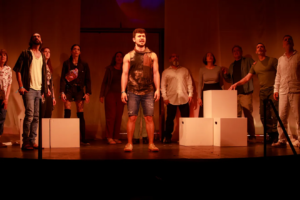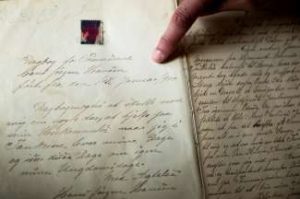The ancient Mayan city of Chichén Itzá, long known as a site of human sacrifice, has fascinated millions of visitors from around the world. But new research reveals more clues to the identities of some of the young victims who were buried at the site in southeastern Mexico — as well as their relatives who are still alive today.
Researchers analyzed genomes from the remains of dozens of children found in a mass burial site near the Sacred Cenote, a massive sinkhole in the ceremonial center of Chichén Itzá where other human sacrifices were previously discovered, and found that all of the individuals were males and a significant number were closely related — including two sets of identical twins, a practice the scientists believe was linked to the significance of twins in ancient Mayan mythology.
The findings contradict the popular belief that young women and girls made up the majority of those sacrificed at the site.
Rodrigo Barquera, lead author of a new paper on the research, said in an interview that the findings were “a breakthrough.” It was the first example of an all-male child burial site in Mexico, Mesoamerica or among Maya cultures, said Barquera, a postdoctoral researcher at the Max Planck Institute for Evolutionary Anthropology in Leipzig, Germany.
The research, published this week in the journal Nature, focused on an analysis of some of the more than 100 child remains recovered from a cistern close to the cenote during the construction of a new airport runway between April and June 1967. Cisterns, or chultún, have long been associated with water, rain and child sacrifice, according to the researchers, and subterranean structures were believed to be entrances to the underworld.
To ensure none of the remains were tested multiple times, the team collected a specific bone from each skull — but as this was not intact in all of the remains, only 64 were analyzed. The researchers then used radiocarbon dating to establish that the children — half of whom were between 3 and 6 years old — died over a period of 500 years, until the middle of the 12th century.
In addition to the two pairs of identical twins, the team found that a quarter of the remains tested had a close relative in the cistern, “suggesting that the sacrificed children may have been specifically selected for their close biological kinship.” Due to the fact that not all of the remains could be tested, researchers say the number of children found at the site who were related could have been even higher.
They also discovered that the closely related children had consumed similar diets. This, together with the fact that the children were of a similar age when they died, indicates they were selected for sacrifice at the same ritual, according to the findings.
The researchers linked the practice of sacrificing close child relatives to a sacred Mayan text, the Popol Vuh, which detailed the sacrifice of a pair of twins after they lost to the gods in a ballgame. One of the brothers’ own twin sons, known as the Hero Twins, went on to avenge their slain relatives, according to the text.
“Early 20th century accounts falsely popularized lurid tales of young women and girls being sacrificed at the site,” Christina Warinner, a co-author of the report and professor of anthropology at Harvard University, said in a statement. “This study, conducted as a close international collaboration, turns that story on its head and reveals the deep connections between ritual sacrifice and the cycles of human death and rebirth described in sacred Maya texts.”
The most popular and interesting stories of the day to keep you in the know. In your inbox, every day.
The ancient city of Chichén Itzá, home to one of the largest pyramids from the Mayan period, first rose to prominence in A.D. 600. According to UNESCO, the site began to decay in the 15th century — but researchers say it remained a popular site for Mayan pilgrims into the colonial period and beyond. It was designated a UNESCO World Heritage site in 1988.
Barquera acknowledged that it could be jarring to realize the remains at the site belonged to “kids, and that they were sacrificed.”
“But we have to bear in mind that death is a completely different concept for Mesoamerican cultures. … Death is not seen as a bad thing. Of course, under our perspective, it’s wrong. But back then, and according to their myths and their beliefs, what they were doing was considered correct, so we cannot judge what they did under our modern point of view.”
The age of the burial site and its use over years show that Mayan rituals “were much more complex than just offering things to the gods because you need a favor or you need to ask for forgiveness,” he added.
The research was not limited to uncovering the ancient history of Chichén Itzá. The study also compared the DNA from the skulls with blood samples taken from 68 modern-day residents of Tixcacaltuyub, a town about 25 miles from the ancient site, and discovered that they were related to the children found in the cistern, indicating that the children whose remains were found there had been taken from nearby ancient Mayan communities.
Barquera said the Tixcacaltuyub residents were “really happy” to hear of their link to the site and said they believed the findings would help them to better communicate with tourists and open conversations about equality.
“You know, you go to these archaeological places, you praise the people that built these amazing structures, and then you get out of the archaeological site and you treat Indigenous people in a bad way,” he said.
“And now they feel this is a way to tell people, ‘Look, we are the same, so why are you excluding us from important conversations, for example health and education, if we are the same people?’” he added.
Last year, the site, which was once named one of the seven modern wonders of the world, attracted a record 2.3 million visitors.
Victoria Bisset is a breaking-news reporter for The Washington Post’s London Hub, covering the most urgent and consequential stories as they unfold on the European day.




